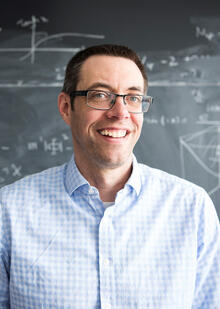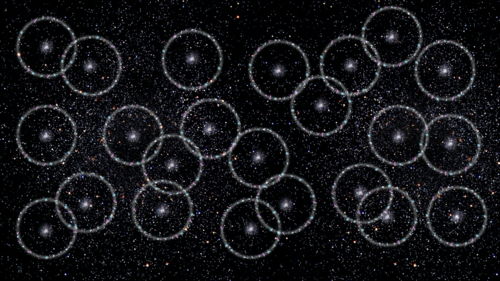
DESI is an international project managed by the United States Department of Energy’s Lawrence Berkeley National Laboratory located at Kitt Peak National Observatory. As a novel scientific instrument, it can measure the distance to galaxies while building on data from the Legacy Sky Survey – the largest ever map of the sky, released in January 2021. With DESI’s sophisticated fibers optics system, it can add depth to the 2D map to create 3D images, telling us how far away these galaxies are.
DESI will collect data over a five-year period. “We aim to observe on the order of 30 million galaxies,” says Will Percival, Distinguished Research Chair in Astrophysics and director of the Waterloo Centre for Astrophysics in the Faculty of Science. This is ten times more than the 3 million galaxies surveyed by the Sloan Digital Sky Survey, another large-scale galaxy survey where Percival was a lead researcher. He and his team will be using data from DESI to study the history of spacetime expansion.
DESI will act as a time-machine, showing us the Universe as it was in the past. The distances to other galaxies are important because faraway galaxies are not only ‘far’ in space but also in time. For instance, if light from a certain galaxy takes 5 billion years to reach earth, the way we see this galaxy now is a snapshot of how it was 5 billion years ago. The huge distances to the galaxies observed means that we can use this to see the Universe evolve.
By seeing back in time, DESI looks at how our universe is expanding. To measure this expansion, researchers look at the distribution of galaxies through a technique called Baryon Acoustic Oscillations. The Baryon Acoustic Oscillation is a pattern seen in the arrangement of galaxies, where if you find one galaxy, you’re slightly more likely to find another galaxy 500 million light-years away than at a closer or further distance. Thus, galaxies form a pattern of interlaced circles and spheres with this characteristic 500 million light-year scale. It turns out that you’re more likely to find galaxies on these circles and rings than elsewhere.

An artist’s conception of the Baryon Acoustic Oscillations, which simplifies and exaggerates the subtle pattern. (Credit: Gabriela Secara, Perimeter Institute)
The scale is not fixed: in the early Universe it was small and grew with the expansion to be 500 million light-years at present day. Imagine a pattern drawn on the outside of a balloon. When the balloon is inflated, the size of the pattern will change too. By studying the size changes in the Baryon Acoustic Oscillation, astrophysicists can determine how the fabric of spacetime has changed through history.
Spacetime is expanding outward (or inflating like a balloon) following the Big Bang, but it is also pulled inward (or deflating) by its internal gravity. With just gravity acting on the matter in the Universe, scientists expected the expansion to gradually get slower over time. But in 1998, scientists found that spacetime expansion is accelerating. This suggested that there was another physical process or form of energy at play, which is now referred to as dark energy.
“The dark energy question is one of the most exciting questions in physics at the moment,” says Percival, also an associate faculty member at the Perimeter Institute for Theoretical Physics. “An analogy would be seeing the effects of electricity – the sparks and shocks – but not knowing the physics required to explain them. Without the physics, it would just seem like magic.”
For Percival and his team, the ultimate goal of this survey is to study the history of the universe’s stretching. With DESI, the possibilities do not end there. Dark energy itself was discovered in a survey of distant galaxies and researchers were not actually looking for it. As Percival puts it, “any time you undertake an experiment that is 10 or 20 times more powerful than you had before, you open up a huge amount of potential for new discoveries. We might find something unknown, something that doesn’t follow our model of cosmology. Or a new kind of object, a new feature, something we haven’t seen before.
“We’re scientists – it’s the unknown that excites us.”